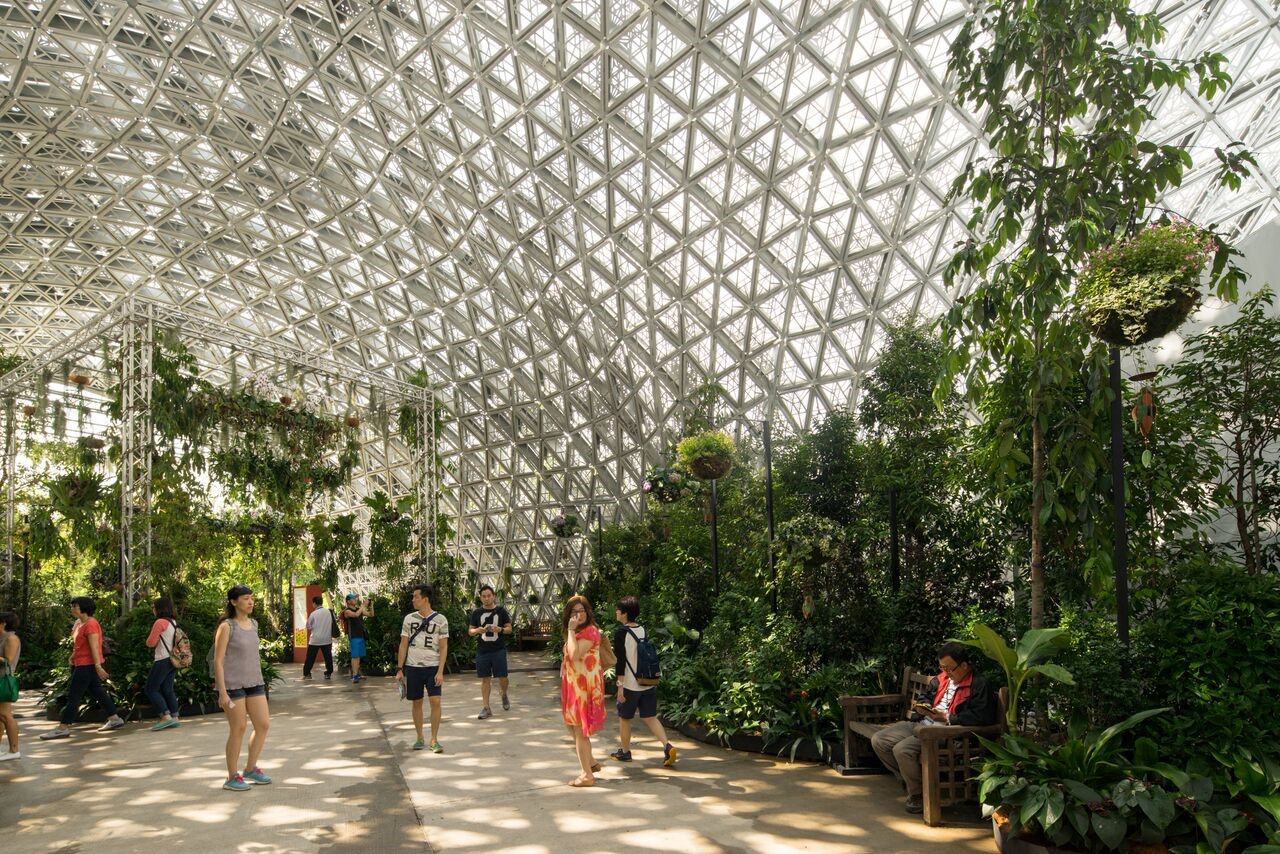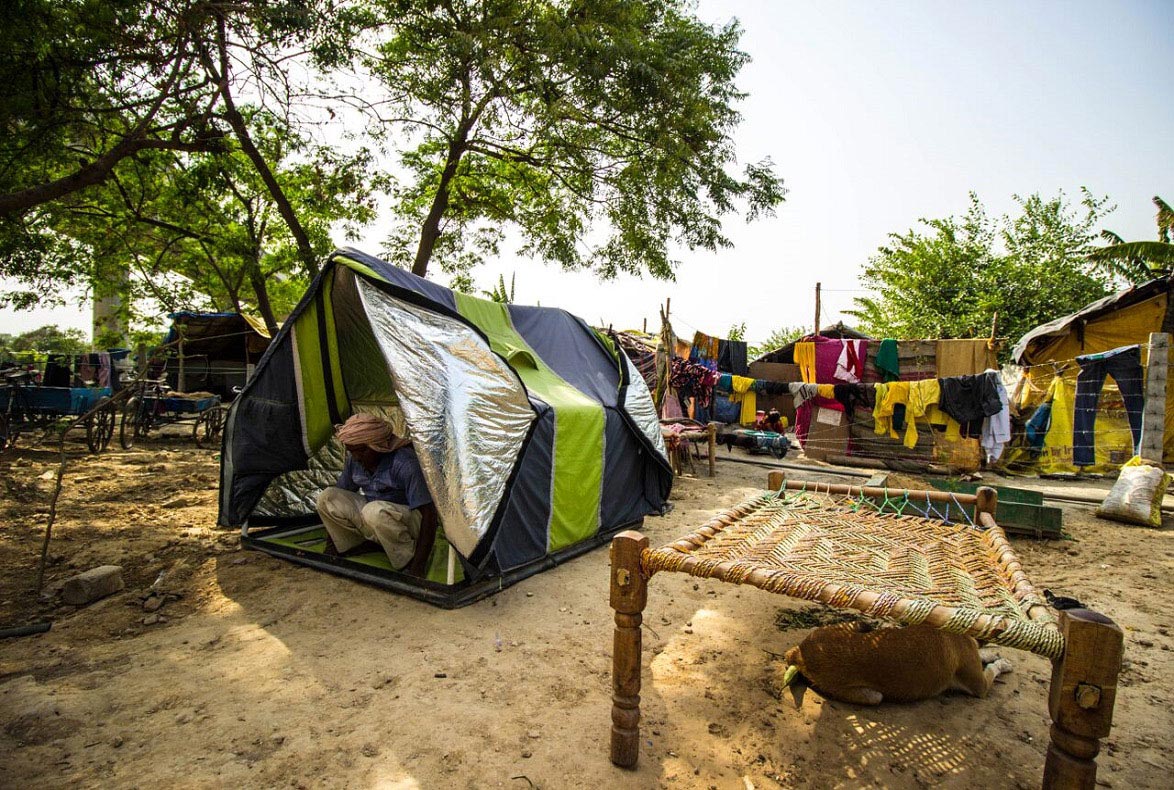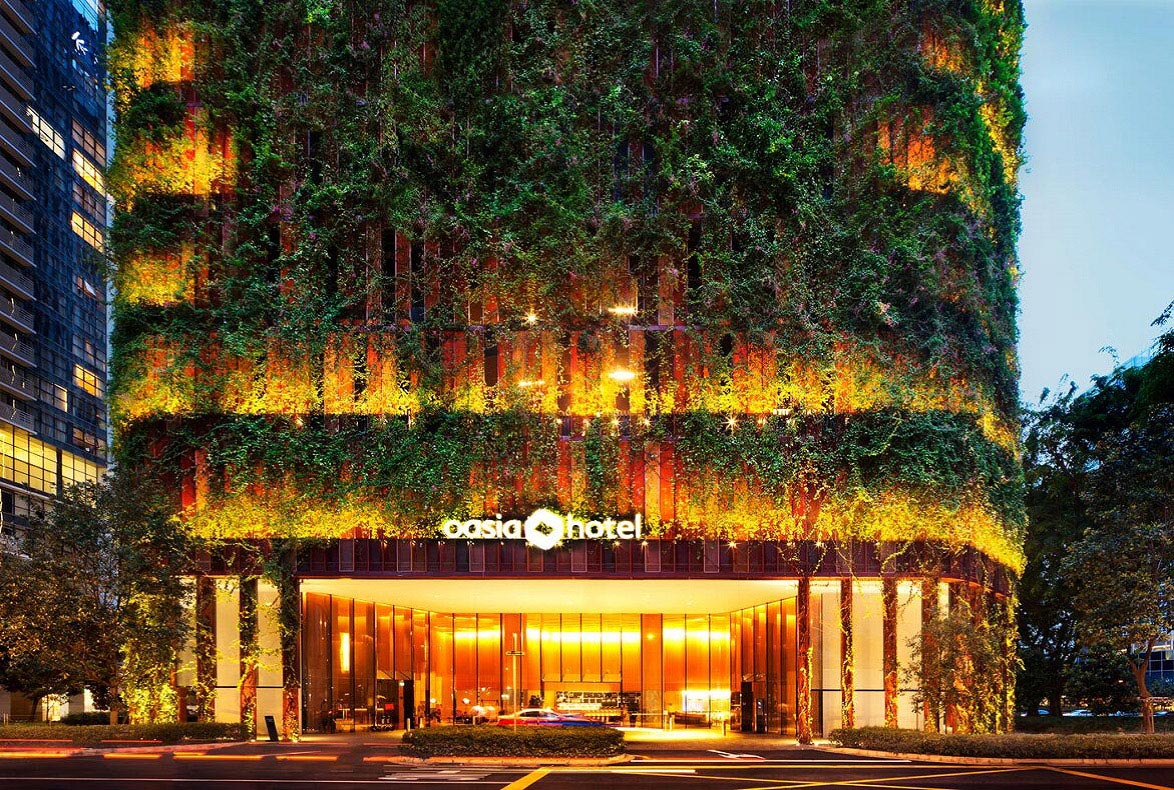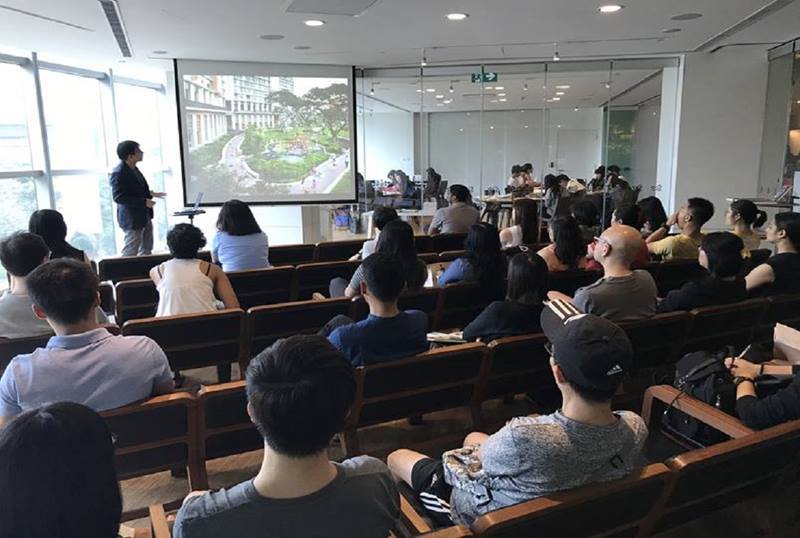How does a once-temporary pavilion become a permanent icon within Gardens by the Bay?
Professor Thomas Schroepfer, who is co-director of the SUTD-JTC I³ Centre, director of Advanced Architecture Lab (AAL) and founding associate head of pillar for the Architecture and Sustainable Design course at the university, expands into this curiosity.
On 29th October 2018, he gave a talk at Temasek Polytechnic on the Future of Singapore’s landscape. Speaking to students and members of the public alike, Professor Schroepfer shared his own portfolio of works - relating them back to architecture and sustainable design.
Here are the key points highlighted during his hour-long talk, specific to designing the pavillion for the ‘Future of Us’ exhibition that has won multiple awards.

It pleases the eye.
The functional artificial foliage provides shade from the natural elements and is an contextual extension of Gardens By The Bay. The play of light and shadow is functional and visually stimulating.
Fun fact: The shell thickness is only a surprising 20cm even though it covers an area of 2000sqm with a height of 16 metres. This is achieved through structural optimisation on the complex geometry pattern.
It is the balance of the ideal and practical.
The original plan was for the pavilion to cover the entire exhibition grounds.
Due to practical reasons, such as sourcing of materials in Asia within a tight deadline, the size was reduced by three times with connection pieces that extend out to the rest of the exhibition.
This is a compromise but also a creative opportunity to be taken; an evolution of the initial idea to build something even greater than expected.
It is optimised and site-specific.
Before building the pavilion, programmes and algorithms were created to optimise the pavilion’s site-specificity. This decreases the generation of material waste.
Examples: Studying wind patterns and mapping the sun path to increase pattern density where necessary, to ensure the most optimal temperature at all times.
Technology such as computers and machines also help in figuring out complexities in a shorter amount of time; saving resources and manpower.
The lines defining architecture, structural engineering and environmental simulation are blurring and this invites more possibilities in the future to come.
It is iconic.
Garnering social media appeal and subsequently being an active community even space, the pavilion has become an icon and will be integrated into the new entrance to Gardens By The Bay.
It is now recognised as an asset that contributes to Singapore’s culture and community.
All this only possible through design made to impact in presence - virtually and in-person.
The Future of Us Pavilion received the P*DA 2018 Design of the Year. To find out more about the winning project, click here!

.jpg)



